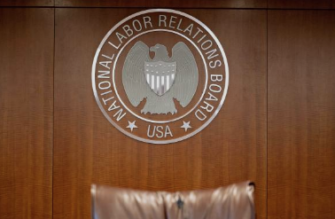Joint Employer Standard
The standard for determining whether two entities are joint employers has been revised several times over the past decade, most recently evolving when the Board decided Browning-Ferris Industries, 362 NLRB 1599 (2015).
Prior to Browning-Ferris, an entity could be held a joint employer only if it exercised “direct and immediate” control over employment terms and conditions in more than a limited and routine manner. In Browning-Ferris, the Board relaxed that standard and extended joint employer status even to entities possessing an ability to control employment terms and conditions indirectly and even if the entity never actually exercised that ability.
Three months later, in May 2018, the Board announced it would consider revising the joint employer standard, and in September 2018 it published a Notice of Proposed Rulemaking. In February 2020, the Board confirmed that it would replace the Browning-Ferris standard with a new rule, effective April 27, 2020. The new rule provided that a joint employer relationship requires the purported joint employer “possess and exercise. . .substantial direct and immediate control” over one or more “essential terms and conditions of employment” of another employer’s employees, such that the “entity meaningfully affects matters relating to the employment of those employees.”
On December 10, 2021, the Board announced in its regulatory agenda that it plans to engage in rulemaking on the joint employer standard again. It has been widely predicted that the Board will revert to the standard that previously existed, which does not require the purported joint employer actually exercise control over employment conditions so long as the company possesses such authority.
Micro-Units Standard
In 2011, the Board lowered the bar for unions to organize smaller groups into bargaining units despite decades of precedent holding otherwise. In 2017, the Board restored the pre-2011 standard for evaluating the appropriateness of a petitioned-for bargaining unit.
On December 7, 2021, in American Steel Construction, 371 NLRB No. 41 (2021), the Board invited public input as to whether it should reconsider that standard again and possibly revert back to the 2011 rule making it easier for unions to organize employees into micro-units.
Citing PCC Structural, Inc., 365 NLRB No. 160 (2017) and The Boeing Company, 368 NLRB No. 67 (2019), the Region held that the community of interest shared among employees encompassed by the proposed unit was not sufficiently distinct from the interests of other employees excluded from the petitioned-for unit.
The Board noted that, prior to PCC Structurals, the Board’s Specialty Healthcare & Rehabilitation Center of Mobile opinion set out a more permissive standard for determining the appropriateness of a petitioned-for bargaining unit, where the standard was whether the employees encompassed by the unit were readily identifiable as a group and shared a community of interest.


 RSS Feed
RSS Feed